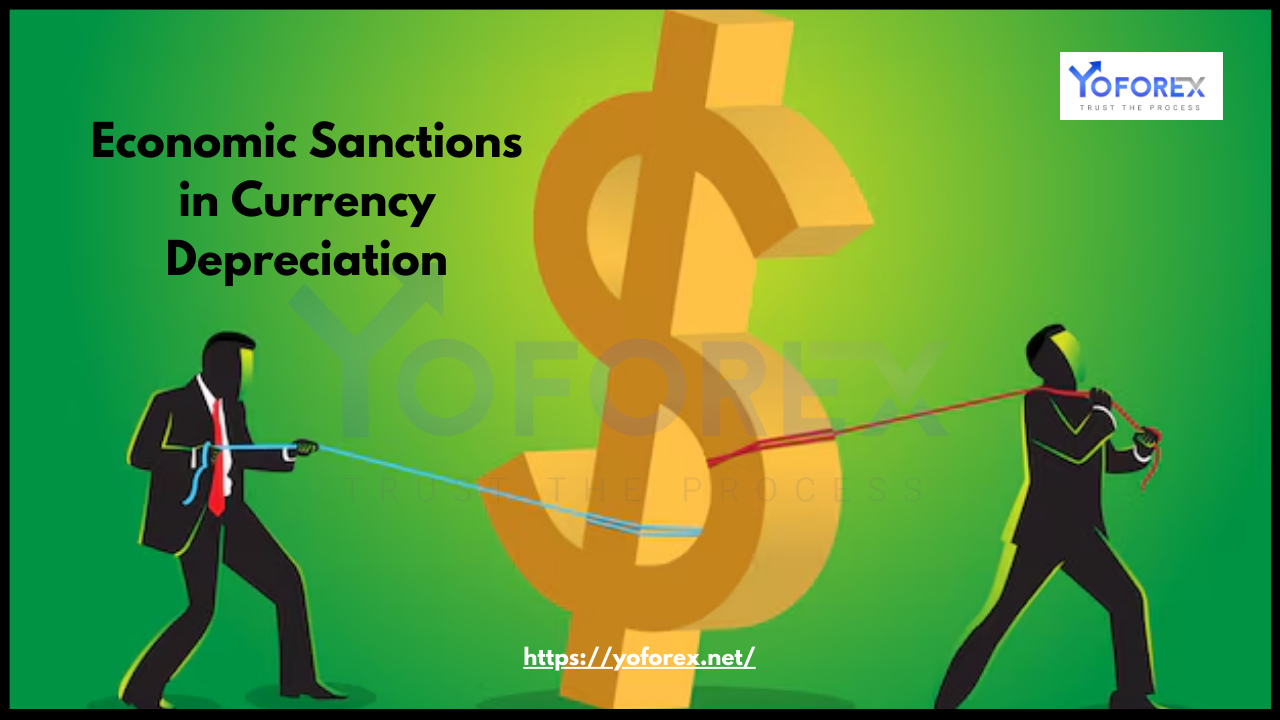Economic sanctions have become a widely used tool in international diplomacy and economic warfare. Countries impose sanctions to achieve geopolitical goals, punish violations of international law, or pressure governments into compliance. However, one significant side effect of economic sanctions is currency depreciation. When a country is subjected to sanctions, its financial system faces immediate pressure, leading to a decline in its currency’s value. This blog explores the relationship between economic sanctions and currency depreciation, their impact on national economies, and the strategies affected nations use to counteract these effects.
Understanding Economic Sanctions
Economic sanctions are restrictions imposed by one or more countries on a target nation to limit its access to international trade, finance, or resources. These sanctions can take various forms, including:
- Trade Sanctions: Restrictions on imports and exports, including essential goods and services.
- Financial Sanctions: Restrictions on banking transactions, freezing of assets, and cutting access to international financial systems.
- Investment Sanctions: Bans on foreign direct investment (FDI) and restrictions on business collaborations.
- Sectoral Sanctions: Targeting specific industries such as energy, defense, or technology.
- Comprehensive Sanctions: Total economic embargoes affecting all sectors.
The primary objective of these sanctions is to create economic hardship in the target nation, forcing its government to change its policies or behavior.
How Sanctions Lead to Currency Depreciation
When a country faces sanctions, its economic stability is threatened, leading to a sharp depreciation of its currency. Here’s how sanctions contribute to currency devaluation:
1. Reduced Foreign Exchange Reserves
Sanctions limit a country’s ability to trade internationally, leading to reduced foreign currency inflows. A decline in exports means fewer U.S. dollars, euros, or other major currencies enter the economy, reducing foreign exchange reserves and weakening the local currency.
2. Capital Flight and Investor Confidence
International investors withdraw capital from sanctioned countries due to uncertainty, fearing asset freezes or restrictions on repatriation. As a result, the outflow of capital increases demand for foreign currencies, causing depreciation of the domestic currency.
3. Restricted Access to Global Financial Systems
Many sanctioned countries are barred from international financial systems such as SWIFT (Society for Worldwide Interbank Financial Telecommunication). This restriction isolates them from global transactions, making it harder to obtain foreign currency, thus weakening the local currency.
4. Inflation and Price Instability
When a currency depreciates, the cost of imports rises significantly, leading to inflation. In sanctioned countries, inflation can spiral out of control as essential goods become expensive or scarce, further depreciating the currency’s value in a vicious cycle.
5. Decline in Trade and Economic Growth
Sanctions disrupt international trade, reducing GDP growth and economic output. A declining economy leads to reduced investor confidence, which exacerbates currency depreciation.

Case Studies of Sanctions and Currency Depreciation
Russia (2014 and 2022 Sanctions)
In 2014, Western nations imposed sanctions on Russia following its annexation of Crimea. The Russian ruble lost more than 50% of its value within months. In 2022, following Russia’s invasion of Ukraine, further sanctions led to another sharp ruble depreciation, prompting the Russian central bank to impose capital controls and increase interest rates to stabilize the currency.
Iran (Sanctions Since 1979)
Iran has faced decades of economic sanctions, especially from the U.S., severely restricting its oil exports and financial transactions. The Iranian rial has depreciated significantly, losing over 90% of its value in the last two decades due to trade embargoes and frozen foreign assets.
Venezuela (2017-2019 Sanctions)
Sanctions imposed on Venezuela by the U.S. and other countries led to a financial crisis, resulting in hyperinflation and the collapse of the Venezuelan bolívar. The country responded by introducing the Petro cryptocurrency, but the currency crisis persists.
Strategies to Counteract Sanctions-Induced Currency Depreciation
Despite severe economic impacts, some nations develop strategies to mitigate the effects of sanctions on their currencies.
1. Alternative Trade Alliances
Countries under sanctions seek alternative trading partners, such as China and Russia, to bypass restrictions. This strategy helps maintain foreign currency inflows and reduces reliance on Western markets.
2. Currency Substitution and Digital Payments
To counteract SWIFT bans, some countries explore digital payments and cryptocurrencies. Russia and China have developed alternative financial messaging systems, while Iran and Venezuela have experimented with state-backed cryptocurrencies.
3. Central Bank Interventions
Sanctioned nations’ central banks often intervene in currency markets by raising interest rates or imposing capital controls to stabilize their currencies. For example, Russia increased interest rates from 9.5% to 20% in 2022 to counter ruble depreciation.
4. Domestic Production and Self-Sufficiency
Encouraging domestic production reduces reliance on imports, stabilizing currency fluctuations. Iran and Russia have focused on local production to counteract trade restrictions.
5. Black Market and Parallel Exchange Rates
In heavily sanctioned economies, unofficial exchange rates often emerge, allowing access to foreign currencies through black-market channels. While not ideal, this system provides liquidity when official foreign exchange reserves are restricted.
Long-Term Implications of Sanctions on Currency Stability
While economic sanctions can be powerful tools, they often lead to unintended consequences. Prolonged sanctions can push target nations to develop self-sufficient economies or alternative financial systems, reducing Western leverage over time. Additionally, overuse of sanctions can weaken the dominance of major currencies like the U.S. dollar as targeted nations seek alternatives such as gold or cryptocurrency.
Conclusion
Economic sanctions play a crucial role in international relations, but their impact on currency depreciation can be severe. While they weaken a nation’s economy in the short term, affected countries often develop countermeasures to mitigate their effects. The interplay between sanctions and currency depreciation highlights the complexity of global finance and the evolving strategies nations adopt to survive economic isolation.

